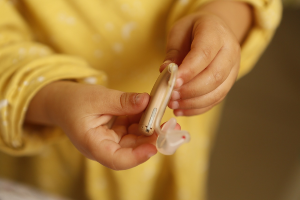Prevalence and pattern of sensorineural hearing loss among children and adolescents with sickle cell disease in a tertiary health facility, Northwest Nigeria

All claims expressed in this article are solely those of the authors and do not necessarily represent those of their affiliated organizations, or those of the publisher, the editors and the reviewers. Any product that may be evaluated in this article or claim that may be made by its manufacturer is not guaranteed or endorsed by the publisher.
Authors
Sickle Cell Disease (SCD) can result in painful vascular occlusion crises, anoxia, and ischemia, which can occasionally cause damage to tissues and organs, including the auditory system, particularly the blood-rich cochlea. Despite being underreported, Sensorineural Hearing Loss (SNHL) is a well-known consequence of SCD globally. The study’s objective was to determine the prevalence and pattern of hearing loss in children and adolescents aged 5 to 16 years old with SCD who were in steady state and were seen at the hematology and pediatric outpatient clinics at Ahmadu Bello University Teaching Hospital (ABUTH), Zaria, Nigeria. A prospective hospital-based case-control study was conducted with 125 children with SCD in steady state, aged 5 to 16, who were enrolled in the hematology clinic at the Ahmadu Bello University Teaching Hospital in Zaria, Nigeria, and 125 ‘age- and sex-matched healthy controls, who were selected from the ABUTH’s pediatric outpatient clinics. An organized questionnaire was used to collect fundamental data on the sociodemographic characteristics and medical history of the participants and controls. In a sound-treated booth, the participant’s hearing was evaluated using tympanometry and pure tone audiometry. Overall, 68 (54.4%) and 57 (45.6%) out of the 125 assessed participants were male and female, respectively, with a male-to-female ratio of 1.2:1 and the mean age 10.17±3.55 years. Due to age-sex matching, the subject’s age and sex distributions match those of the controls. Children with SCD experienced bilateral SNHL ≥25 dB in 32/125 (25.6%) cases (21 males;11 females). The control group, which had a HbAA phenotype that was normal, did not exhibit any hearing loss. 21/32 (65.6%) of the participants had mild (26-40 dB) hearing loss, and SNHL occurred more frequently in males (21/32 (65.6%) than in females (11/32 (34.4%). In comparison to 3(9.4%) HbSC and 1(3.1%) HbSS+F, SNHL was more common in individuals with 28(87.5%) HbSS phenotypes. While diverse frequencies were impacted in the affected participants, there was no consistency in the frequency pattern of hearing loss. The current study showed that SNHL is a frequent complication in children and adolescents with SCD. About 25% of children and adolescents with SCD experienced SNHL, which disproportionately affected males. Frequent audiometry should be carried out to check the children’s hearing levels and identify any early hearing losses so that interventions can be made to perhaps prevent associated speech and language issues that might cause educational challenges.
How to Cite

This work is licensed under a Creative Commons Attribution-NonCommercial 4.0 International License.
PAGEPress has chosen to apply the Creative Commons Attribution NonCommercial 4.0 International License (CC BY-NC 4.0) to all manuscripts to be published.

 https://doi.org/10.4081/aamr.2023.184
https://doi.org/10.4081/aamr.2023.184



